Happening 4 Introduction:
On the evening of November 14, 2020 seven of us craftspeople met at 136 Seneca St for Happening 4: Creator’s Response. This night was much different than any previous Happening. Rather than having a curated discussion for the duration of the evening, we had a collaborative making session.
I had asked everyone who was invited to please bring a tool and/or material to share for a collaborative making session. The end goal was unclear, but how I planned for everyone to get there was fairly simple. I provided access to various materials and tools which everyone who joined had contributed to. The materials that I provided included: reclaimed maple basketball court flooring, 8/4 white oak lumber cut-offs, old 6x8 panes of glass, pieces of an old sliced up door, 5/4 pine tongue and groove flooring cut-offs, 3/32” stainless steel wire rope, pieces of an old white oak fireplace mantle, a dismembered wooden chair, drywall scraps, various bricks and limestone, paint, glue, nails, screws, and wire. The tools that I provided included: various pneumatic nail guns, a drill and driver set, a miter saw, a bench grinder, a hammer, various drill bits, various clamps, tape, scissors, a knife, a Japanese pull saw, a swager, and anything else they wanted to use in the building. The tools and materials which were brought to share included: various fabric, some wire, chisels and craving gouges, and various metal scraps.
Participants:
The deconstructive-sculptor/architectural-designer/woodworker-carpenter
The textile-artist/fashion-designer/carpenter
The social-interpreter/multimedia-artist/ writer
The DIY-theorist/architectural-designer/woodworker-carpenter
The metal-artist/jewelry-maker
The traditional-transformer/architectural-designer/woodworker-carpenter
The realist-painter/abstract-architectural-designer
Happening 4 Summary:
At the beginning I suggested that we all split into three groups; one with the social-interpreter/multimedia-artist/ writer, the metal-artist/jewelry-maker, and me the deconstructive-sculptor/architectural-designer/woodworker-carpenter; one with the realist-painter/abstract-architectural-designer and the DIY-theorist/architectural-designer/woodworker-carpenter; and one with the traditional-transformer/architectural-designer/woodworker-carpenter and the textile-artist/fashion-designer/carpenter. At some point early on in the night, the two groups of two joined to form one group of four.
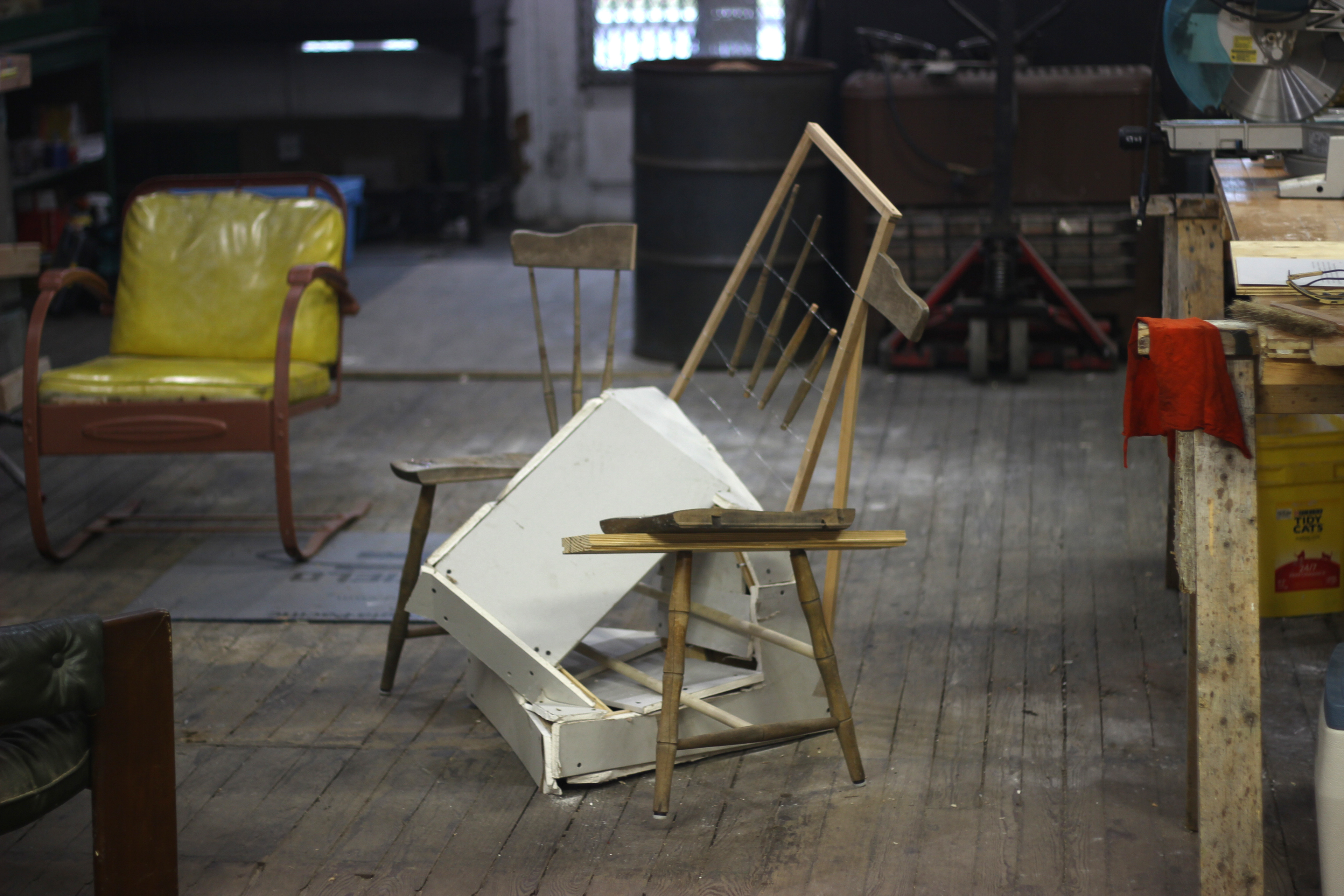
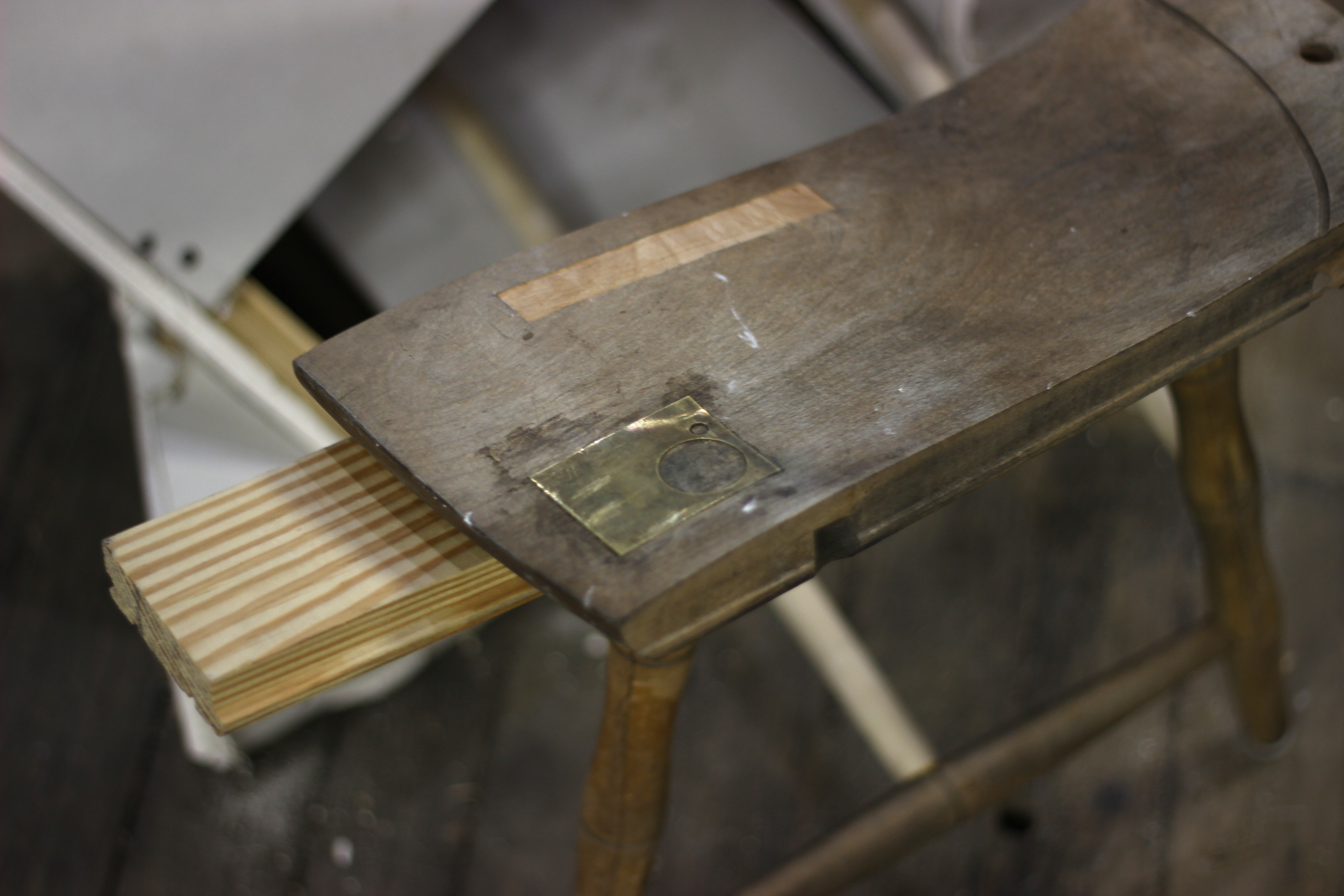
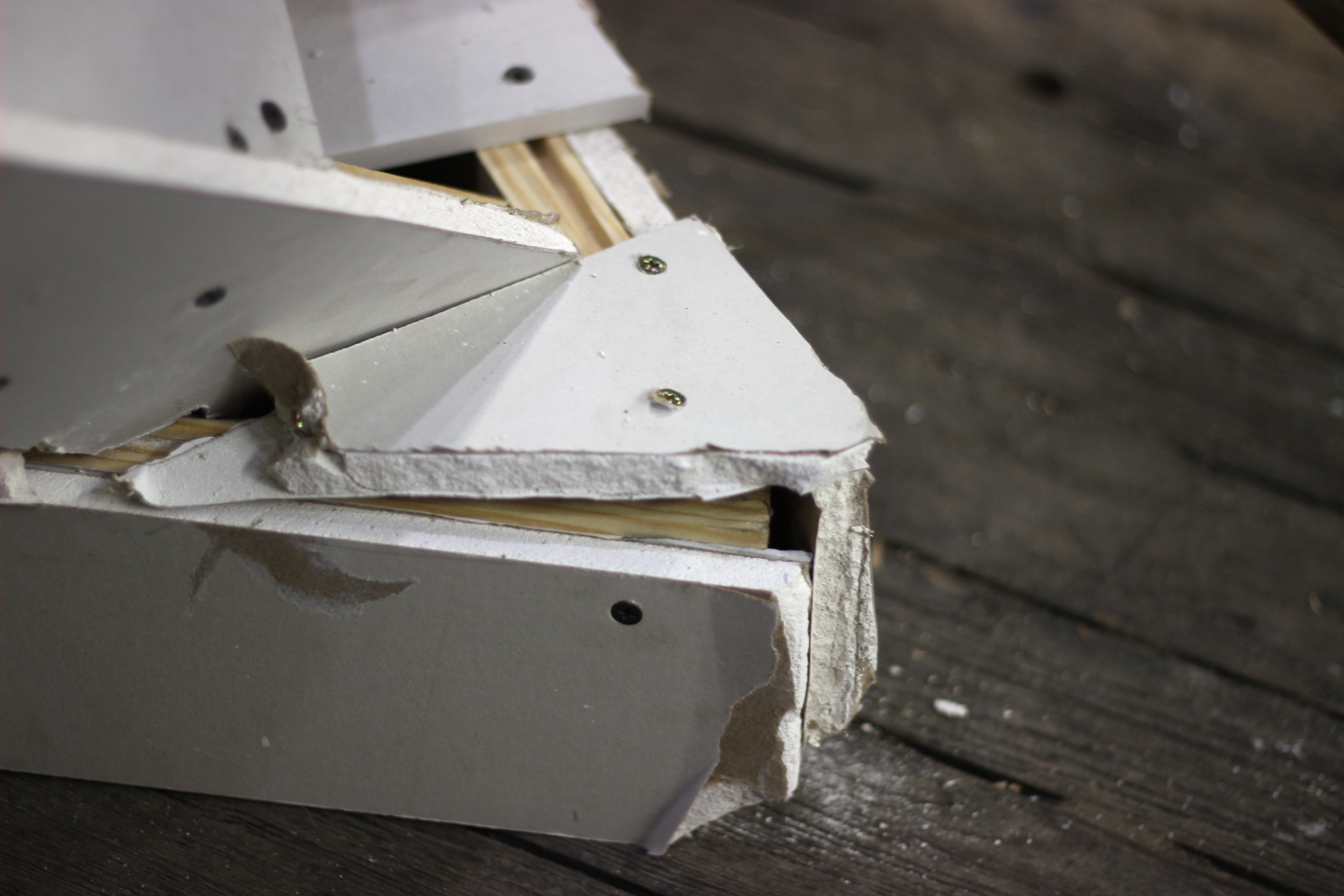
The object which inspired the group of four was the dismembered wooden chair. They began by discussing the possibilities that the chair offered them, and making small interventions like replacing a pissing piece of the chair’s seat with a piece of pine tongue and groove flooring. Very early on in the process this group broke up into four separate projects which rejoined at the end into one conglomerate piece.
The traditional-transformer/architectural-designer/woodworker-carpenter and the DIY-theorist/architectural-designer/woodworker-carpenter began carving into pieces of the broken chair seat. They carefully inlaid pieces of copper and brass scraps into the seat. Their processes were time consuming due to the necessary care and attention to detail which their inlay and carving processes demanded.
The traditional-transformer/architectural-designer/woodworker-carpenter chose a small 2”x3” square piece of sheet brass scrap which has to circles removed from it. They then carved out the negative of the metal scrap into the chair’s wooden seat, removing everything but two precisely placed circles which had to line up perfectly with their matching pair in the metal scrap piece. The DIY-theorist/architectural-designer/woodworker-carpenter chose a piece of sheet copper scrap which also had a circle removed from it, but decided to alter its overall shape by cutting and grinding its edges into an asymmetrical polygonal flag-like form. Both of them joined the metal to the wood with a polyurethane based glue and clamped the pieces to dry.
Their process was in direct response to the materials and tools which were available to them. I imagine the stark contrast in the characteristics between metal and wood is the reason which drove them to join the two materials. This kind of inlay requires a high level of skill and knowledge in the use of wood, and the end result shows clear evidence of that skill. But, what about the metalworker? How could the metal be transformed to accept the wood? Just as the wood was transformed to accept the metal.
The textile-artist/fashion-designer/carpenter made a tectonic sculpture which was structured by pine tongue and groove flooring and cladded by drywall scraps and screws. It was about the same size as the chair, and was composed of intersecting angles which created a faceted surface composed of various sizes of drywall polygons. It is interesting to note that the traditional-transformer/architectural-designer/woodworker-carpenter and the DIY-theorist/architectural-designer/woodworker-carpenter function mainly on the fine woodworking side of the carpentry scale, while the textile-artist/fashion-designer/carpenter functions mainly on the rough framing side of the carpentry scale. The textile-artist/fashion-designer/carpenter was responding to wood and drywall cut-offs which are byproducts of the carpentry field, and the final product was a very angular volume which is very clearly composed of otherwise wasted standard sized materials. Where the traditional-transformer/architectural-designer/woodworker-carpenter and the DIY-theorist/architectural-designer/woodworker-carpenter were responding to precious metal cut-offs and wooden chair that required great skill to make, and their process became about the very careful joining of the two materials. The textile-artist/fashion-designer/carpenter process was more aggressive in response to waste materials from a wasteful industry, where the traditional-transformer/architectural-designer/woodworker-carpenter and the DIY-theorist/architectural-designer/woodworker-carpenter process was gentler in response to an existing object of good quality and precious metals.
The realist-painter/abstract-architectural-designer made a harp-like object assembled from chair spindles, wire, and some scrap maple pieces. It was very two dimensional, almost like the frame of a canvas for painting. The boundaries of the object were defined by a bordering maple frame which was slightly trapezoidal but almost rectangular. Both sides were slightly angled to oppose the fanning arrangement of the spindles which were suspended by wire within. The frame was about 18”x24”, and the wire parallel to the short side and broke up the long side into about 6” rows. Each spindle was twisted into the wire to suspend them in place, they were running near parallel to the long side of the frame, but were all angled towards a point off in the distance creating a fan like arrangement. It is interesting to consider that the realist-painter/abstract-architectural-designer professional disciplines often work in two dimensions. I assume their experience in these two fields drove her to work to become more planar, which is in direct contrast to what the others in their group created due to their experience working primarily in three dimensions.
The joining of all four pieces resulted in a chair-like abstraction which was clearly made from scrap materials. The two halves of the seat which the woodworking-carpenters worked on were placed at each end of the object with their original chair legs to hold them up. One was at the left end with a partial chair back (from the original chair), and one was at the right end resting on top of the two original legs that were now joined with a piece of pine tongue and groove from their first intervention as a group. In the middle of the two halves was the rough-carpenter’s tectonic drywall piece which was intersected by two cross rails joining the seats at each end. The realist-painter/abstract-architectural-designer’s piece was joined to piece acting as an abstracted chair back.
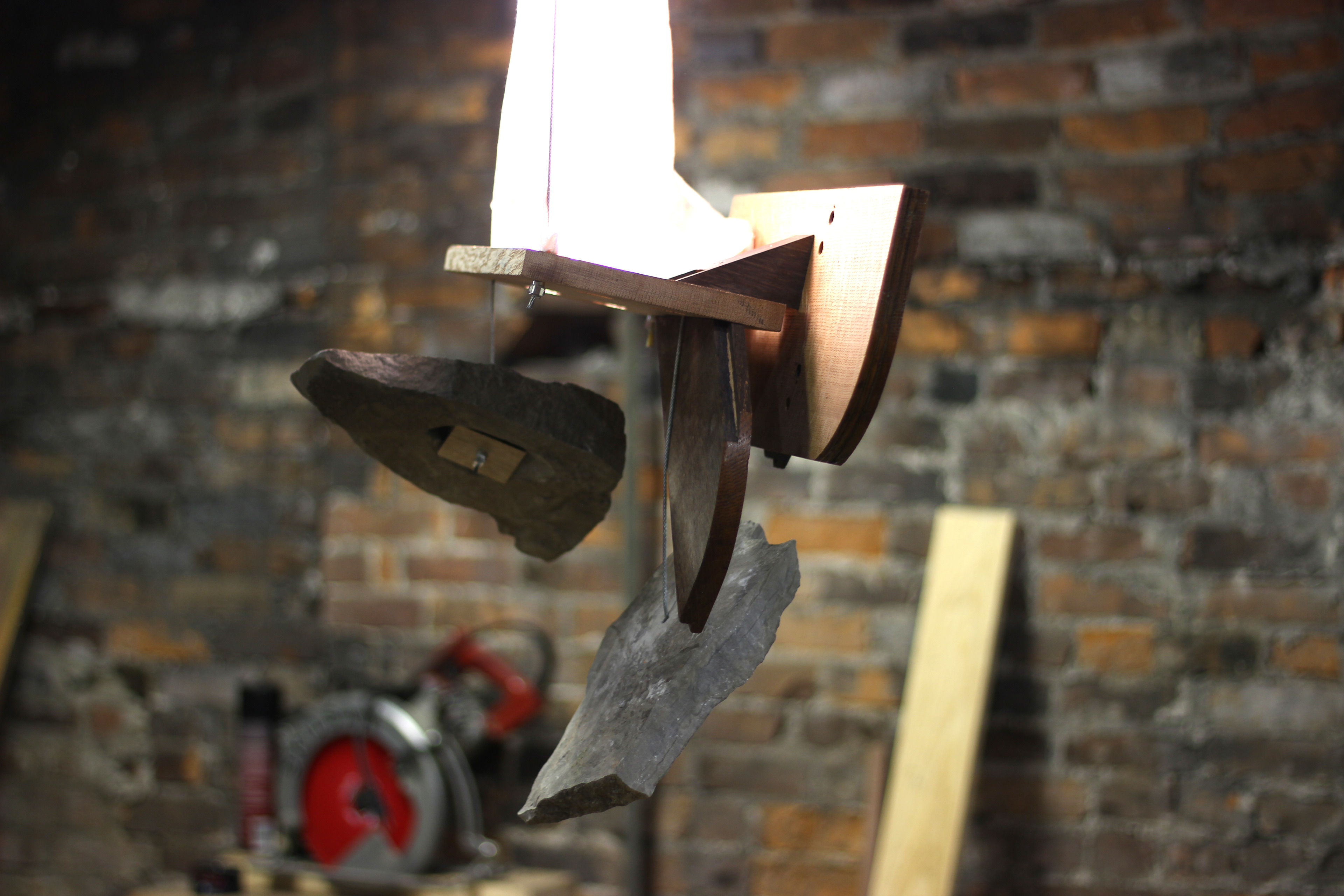
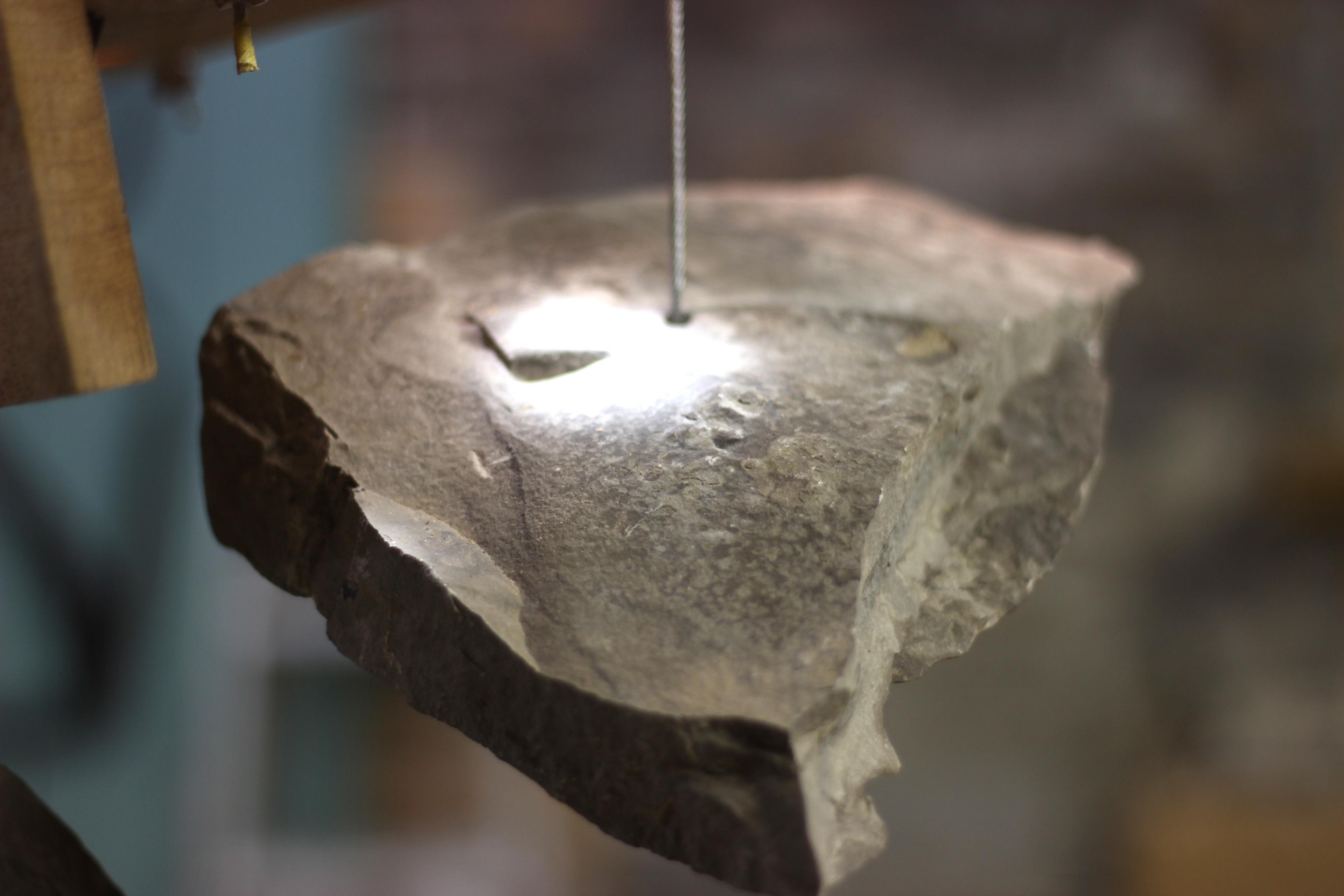
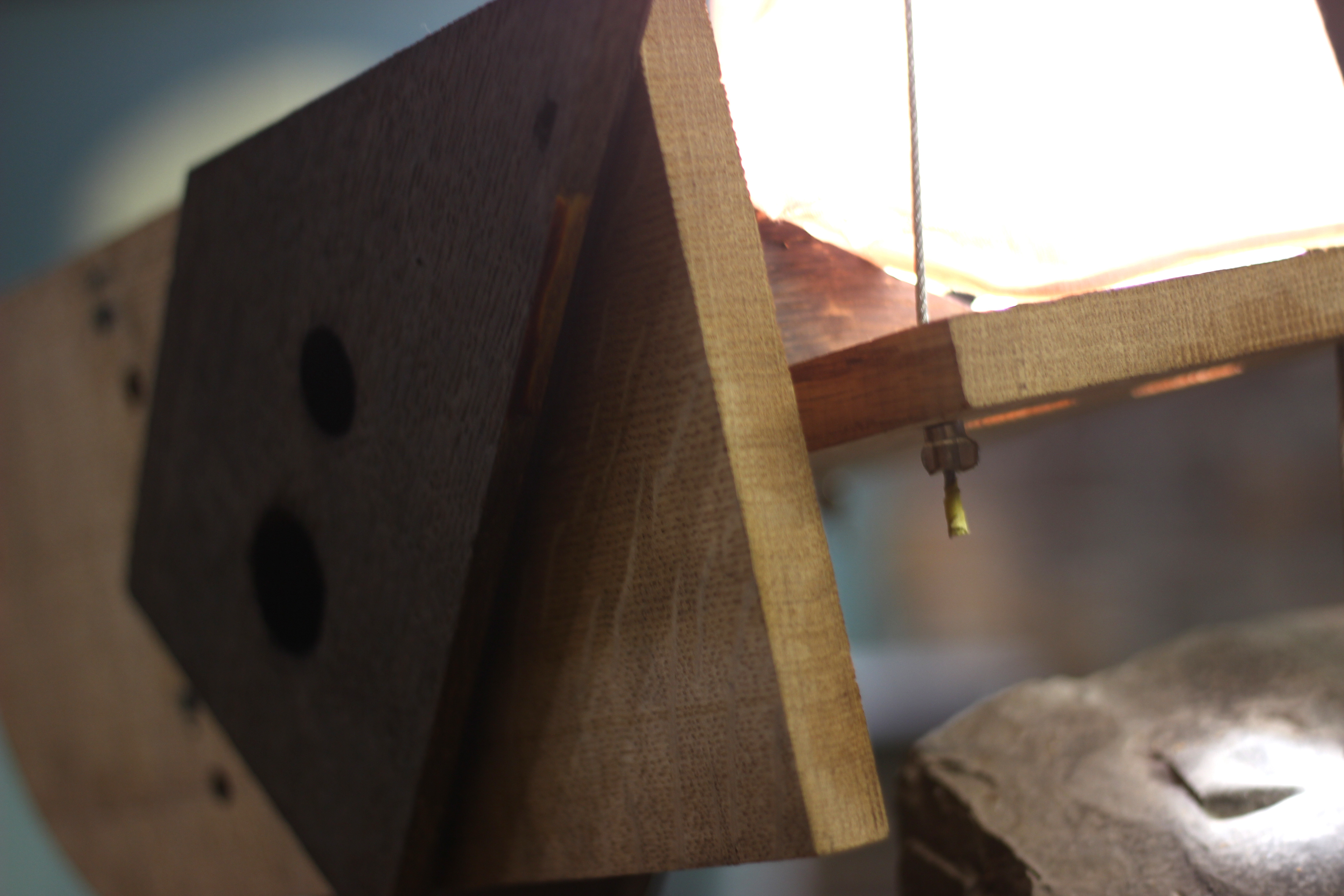
The object that the social-interpreter/multimedia-artist/ writer, the metal-artist/jewelry-maker, and me the deconstructive-sculptor/architectural-designer/woodworker-carpenter created became a sort of hanging mobile-like sculptural light fixture composed of wood, stone, wire rope, and fabric. The overall idea and form were inspired by the social-interpreter/multimedia-artist/ writer’s initial response to a piece of the fireplace mantle. They proposed to hang the square piece of white oak (about ¾”x 6”x12”) with four holes in it from the ceiling so that light could pass through the holes. I then added an idea about it possibly being like a mobile in a baby’s crib. We began talking about weight and balance, which reminded me of the various pieces of limestone laying in the basement. Aside from the formal appearance, we were talking about contrasting the pieces of wood by ebonizing some and not others. It was a real balance of color, light, and weight.
The origin piece was hung with wire rope by two corners about three feet from the ceiling. It was hung with one continuous piece of wire rope, so that the opposing corners heights could be adjusted by sliding a point of the rope along the hook it was hung from. Two chunks of limestone were then hung from the origin piece by their centers with a single piece of wire rope. They were hung so that if you lifted one chunk was raised vertically, the other would lower.
While we were hanging these pieces, we had some ebonized pieces of a white oak fireplace mantle dying from the ebonizing solution. These pieces were cut from one piece of the mantle, it had one filleted corner and a couple holes. We cut this piece in half at a 45-degree angle so that we had two asymmetrical polygonal pieces, one with a round filleted corner and the other with two holes. These pieces were intended to balance the horizontality of the hanging origin piece by fixing them to the origin piece in a vertical orientation.
Once we had all of these pieces assembled, we decided that we wanted the contrast of light and shadow to be more intense. We decided to hang a light bulb from the ceiling down onto the center of the object. We wanted the light coming from the bulb to shine through the holes onto the chunks of stone, while also creating a contrast from glare on the bottom of the origin piece. The direct glare from the bulb was very intense when looking from the side, so we started trying to enclose the bulb in the wood to block the glare. We noticed that the light slipping through the corner seams of the wood provided a very subtle contrast. This inspired us to offset a vertical piece a few inches out form the origin piece to allow light through this intentional gap. We offset this piece by using two triangular cut-off pieces, the short base of the triangle joined to the vertical offset piece, and the long side of the triangle attached to the horizontal origin piece. Leaving the hypotenuse directly exposed to the light on top of the origin piece.
The battle against the direct glare continued. With one side enclosed, we still had three to go. We started attempting to make a shroud with paper and fabric. We used a piece of light pink fabric which was relatively transparent, and we began stretching it down from the bulb to the origin piece. The tension between the bulb and the anchor points on the origin piece, created small arcs which allowed bits of light out the long side of the origin piece. The excess fabric ended on the short side which was left to dangle and further diffuse the light. One side was relatively open to direct glare, the second was stretched to allow for a nice even diffuse light to pass through the fabric, the third was bunched to create a dimmer diffuse with less light, and the fourth completely blocked glare with the vertically offset piece of white oak.
